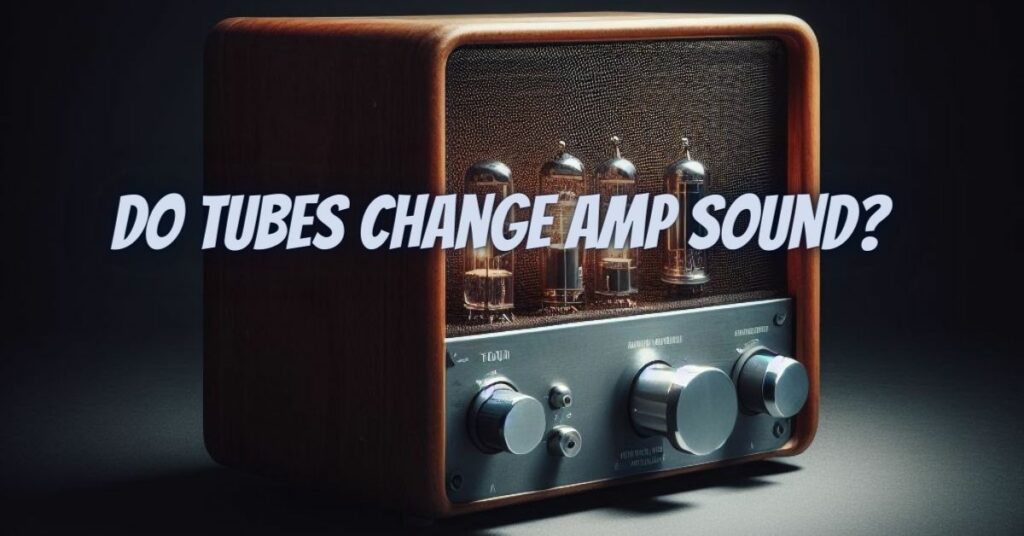Tube amplifiers, often affectionately referred to as “tube amps,” have held a special place in the hearts of musicians and audiophiles for decades. These amplifiers, featuring vacuum tubes (or valves), are celebrated for their warm and harmonically rich sound. In this article, we will explore the fascinating world of tube amplifiers and how they transform the sound of amplifiers, lending their unique and cherished character to the music they amplify.
I. The Heart of the Tube Amplifier
At the core of a tube amplifier is its vacuum tube. These tubes are electronic devices that manipulate the flow of electrons through a vacuum or low-pressure gas. The classic tube types found in amplifiers include the EL34, 6L6, 12AX7, and more. It is the tubes’ operation and behavior that significantly influence the amplifier’s sound.
II. The Transformation of Sound
Tube amplifiers bring about a transformation in sound that sets them apart from their solid-state counterparts:
- Harmonic Distortion: One of the most notable characteristics of tube amplifiers is the introduction of harmonic distortion. Unlike solid-state amplifiers, which aim for linearity, tube amps embrace distortion as an essential part of their character. This distortion is primarily composed of even-order harmonics, creating a warmth and richness in the sound. The harmonics introduced by tubes are often described as “musical” and “smooth.”
- Tonal Warmth: Tube amplifiers are celebrated for their tonal warmth. This quality imparts a sense of intimacy and comfort to the music, making it feel rich and inviting. The warmth and richness in the midrange frequencies contribute to this character.
- Dynamic Response: Tube amplifiers are known for their dynamic response to playing. They react to the player’s touch and dynamics, offering a wide range of expressive possibilities. When a guitarist digs in and plays aggressively, tubes respond by introducing more distortion and intensity. Play softly, and the tone cleans up, allowing for a broad palette of expressive techniques.
- Smooth Overdrive: The natural overdrive characteristics of tubes are a defining feature. When pushed beyond their clean capacity, tubes produce smooth and gradual overdrive. This overdrive quality is often described as “singing” and “sustaining,” making it ideal for lead guitar work and expressive playing.
- Midrange Emphasis: Tube amplifiers are known for their midrange emphasis. This characteristic allows the guitar or vocals to cut through the mix with a distinctive presence. It is why tube amps are favored in genres where midrange clarity and articulation are essential.
III. The Tube Selection Impact
Different tube types bring their unique tonal characteristics to the mix, offering guitarists and musicians a wide range of tonal possibilities:
- EL34: Known for its British crunch, the EL34 is a favorite choice for classic rock and blues tones.
- 6L6: Renowned for its clean and robust sound, the 6L6 is a staple in the amplifiers of many guitarists.
- 12AX7: Commonly used in preamplification, the 12AX7 is celebrated for its musicality and lush harmonics.
- KT88: Known for its power and richness, the KT88 finds its place in high-end audio and hi-fi applications.
IV. The Impact on Music
The transformation of sound by tube amplifiers has left an indelible mark on music. Tube-driven guitar tones are integral to classic rock, blues, jazz, and many other genres. Iconic guitarists like Jimi Hendrix, Eric Clapton, and Stevie Ray Vaughan have relied on tube amplifiers to craft their signature sounds.
Tube amplifiers, with their harmonic distortion, tonal warmth, dynamic response, and overdrive characteristics, have a profound impact on the sound they produce. They are celebrated for their ability to transform music, adding depth, character, and richness. The allure of tube amplifiers continues to captivate musicians and audiophiles, and their unique sound has become a timeless and cherished part of the world of amplification and audio. Whether on stage, in the studio, or in the living room, tube amplifiers remain a beloved and enduring feature of the music landscape.


